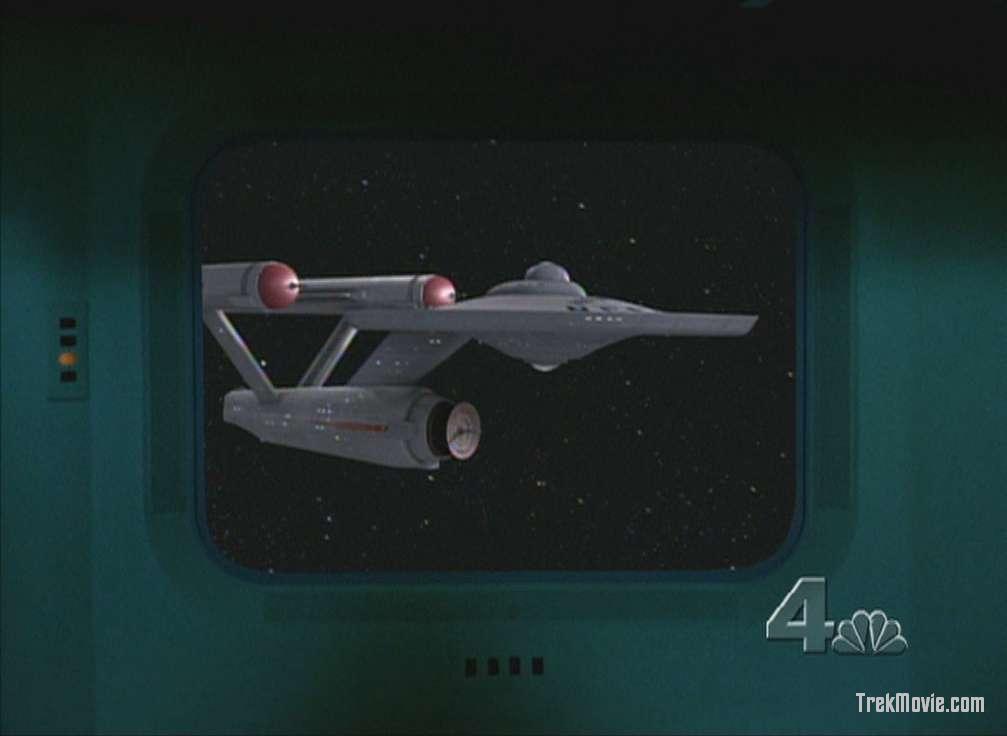"The Menagerie" on the big screen

Well, after thinking about it for five days, I've decided that the particular showing I saw at the Empire theatre in Mississauga of the classic two-part Star Trek episode "The Menagerie" was a disappointment. There's no way the theatre was using a true 1080p HD projector; my guess is that it was just VGA quality -- scan lines were clearly visible. More: the image wasn't bright enough; black objects (such as the uniform pants) were just solid black blotches, instead of showing details.
Now, yes, they technically didn't advertise this as an HD projection, but it was geared around the release of the first season of Star Trek on HD DVD. Apparently, some theaters -- Calgary was one it, seems -- did use true HD projectors, and those who saw the episodes projected thus were blown away. But the theater I saw it in didn't do that ... and, frankly, I feel ripped off, although Carolyn and I enjoyed the company of friends Chris Knight, Lee Amodeo, Lou Sytsma, and others at the showing ...
The Robert J. Sawyer Web Site



6 Comments:
That's unfortunate.
But your comments reflect a very important factor about HD and the many different digital image resolutions in relation to screen size and viewing distance that the general public have no understanding of. For example, true HD in the home, on a typical 46" display is essentially pointless, as a 720 dpi resolution image is almost indiscernible at that size in that environment. Even my projector with 10' screen showing a standard DVD image blows people away. Yes, true HD on that screen size at the (average) 15' viewing distance would look better, but only marginally so. Not enough to get involved in the current format war in my opinion.
In a commercial theatre though, there's no excuse. Anything less than true HD would look like crap and be an insult the the eyes.
As with our previous discussions, you are becoming/have become a true videophile. Or as some would say, a videosnob. Raspberries to them, enjoy the best of the best Rob, and revel in you superior appreciation.
Don
Thanks Rob. I enjoyed the presentation more than you did - but it was my first taste of upgraded Trek so I was pleasantly surprised. I agree the resolution was more likely 720p and the screen door of the projector was quite visible causing unnecessary jaggies.
Well said, Don. I saw high-def cable on a 34" widescreen television and it looked *exactly* like regular cable. I never would have known it was high-def had I not been told.
Given the cost of a high-def signal, and the cost of the equipment required to make the signal worth the cost, I'll be sitting out this upgrade for quite some time.
Hey Rick - just so you know - over the air HD signals are free beyond the installation of those old TV towers and antennas.
Given the continuing rise in cable costs this alternative is looking more and more attractive to me.
It would be well for Rick to note that an HD signal can be picked up for free, without any subscription cost, as long as there is a receiver to receive it and a compatible television to show it. Since most tv's sold now are HD (Best Buy has canned standard def sets), it's never been cheaper to get HD, which can come in through that old 1960's antenna on your roof if you want. And because it's digital, there's no snow. Either you get the signal or your don't. Food for thought.
One big problem with over-the-air HD reception is similar to "snow". Any interference or multipath that garbles the signal will cause pixel loss and if it gets to be a certain percent loss (I forget the number), the signal goes blank.
And depending on where you are, you'll be lucky if you get the 3 local stations.
It's free for a reason.
But then cable ain't much better. The providers attitude generally is to cram as many channels within their bandwidth allotment and to-hell with resolution. They'll lower it, level by level, to fit more channels in.
Post a Comment
<< Home